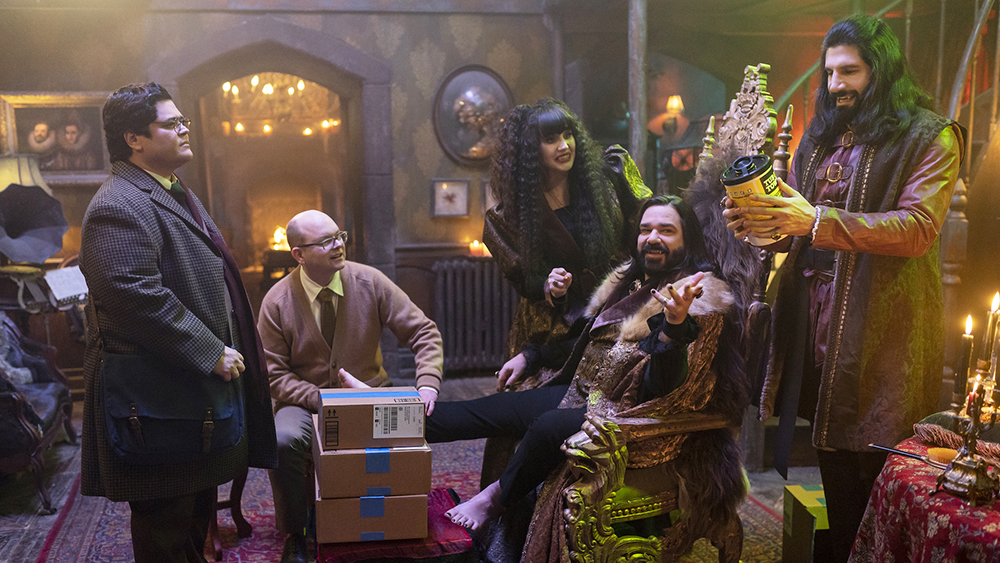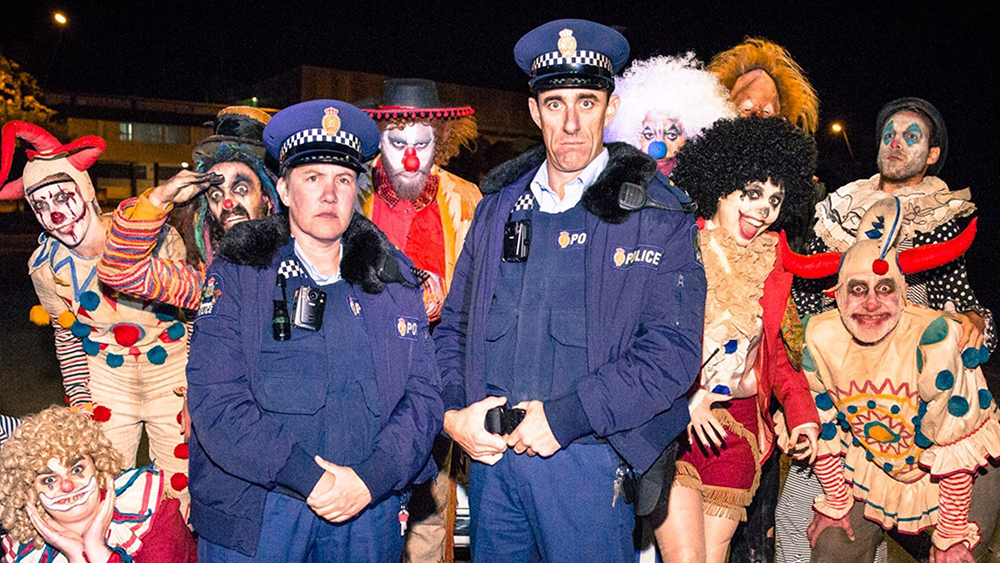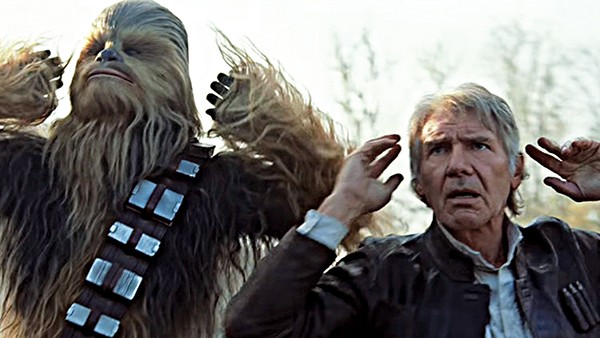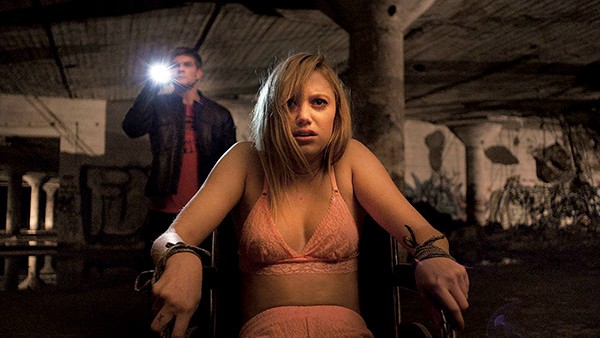Happy Halloween, everyone! With the looming presidential election between Vice President Kamala Harris and fascist degenerate Donald Trump on everyone’s mind, this spooky season has been scarier than normal, but not in a good way. As we rush toward the inevitable day of judgement, I trust Memphis Flyer readers to do the right thing next Tuesday, so that one day soon, we will never have to look at that evil orange clown again.
Since real life is pretty frightening, you can flee to TV for horror that’s a lot more funny than it is scary. I’m talking about What We Do in the Shadows, which debuted its sixth and final season this month on FX and Hulu.
What We Do in the Shadows began life 10 years ago as a movie directed by Flight of the Conchords co-creator Jemaine Clement and Thor: Love and Thunder director Taika Waititi. Originally set in a normie suburb of Wellington, New Zealand, the film made great use of the mockumentary format. Many contemporary reviewers compared it to The Office with vampires, but it had more in common with the seminal 1992 mockumentary Man Bites Dog. In that film, which is rarely seen these days, a Belgian documentary film crew follows a psychopathic serial killer named Ben as he goes about his grisly business. His avuncular, sometimes goofy nature is contrasted with the brutality of his murders, and the film crew slowly moves from detached objectivity to complicity. The vampires in What We Do in the Shadows are also stone-cold killers, but they’re stone-cold because they’re undead monsters. The original film was a reaction to the ridiculously popular Twilight series, which took the “forbidden monstrous passion” subtext inherent in vampire stories since Bram Stoker, and made it the whole of the text.
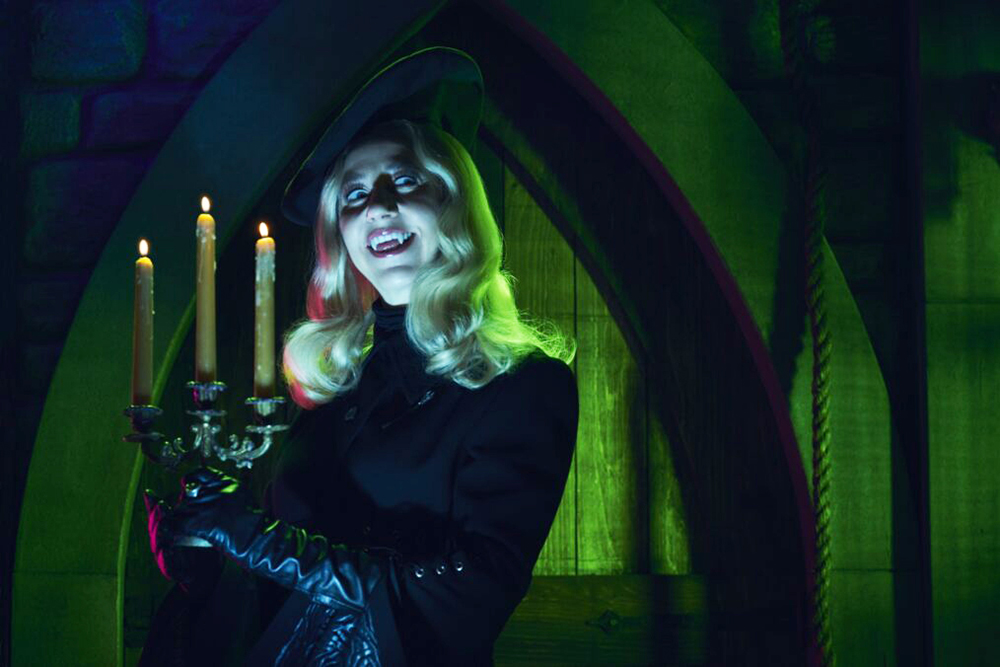
Now, with Twilight fading in memory, What We Do in the Shadows has flourished. The TV series, which premiered in 2019, moved the setting from New Zealand to Staten Island, New York, where four vampires live together in a crumbling Victorian haunted house. There’s Nandor the Relentless, a 760 year-old former Ottoman warlord, played by Kayvan Novak. Nadja of Antipaxos (Natasia Demetriou) is a 500-year-old Greek Romani sorceress who, last season, briefly became a nightclub manager. Laszlo Cravensworth, played by the imitable Matt Berry, is a 310-year-old British noble who was turned by, and later married, Nadja.
Colin Robinson (Mark Proksch) is the youngest of the coven, at 100. He is an “energy vampire” who feeds by boring his victims to death with long soliloquies about nothing. The only non-vamp in the mix is Guillermo (Harvey Guillén), who is Nandor’s familiar. But rather than a sniveling Igor type, mindlessly in thrall to his vampiric master, Guillermo is organized, thoughtful, and keeps the household running. He desperately wants to become a vampire himself, and in the fifth season it seemed he would get his wish. But he’s also a descendant of Van Helsing, Dracula’s arch enemy, so that complicates matters.
The main cast has been joined by a bevy of guest stars over the years, including the great Kristen Schaal as The Guide, a representative of the Vampiric Council who, a century ago, assigned the vampiric roomies to bring North America under the thrall of The Baron (Doug Jones), an ancient vampire lord. Needless to say, they haven’t made much progress towards that goal.
That’s where Season 6 kicks off. In the first of three episodes aired as the season premiere, the roomies suddenly remember to awaken their forgotten roommate Jerry, played by former SNLer Mike O’Brien. Jerry is a basic vampire who entered “super slumber” in 1976, leaving instructions that he be awakened in 1996. But Nandor and the crew got busy and kinda forgot. Jerry’s return serves as a wake-up call to our vamps. He’s baffled with the lack of progress at conquering the New World, and chalks it up to decadence. The Guide agrees and anoints Jerry as The Chosen One who will lead vampires to world domination. This leads the vamps to reconsider their comfortable, laid-back lives. But not too closely.
In the second episode, “Headhunting,” our vamps try to refocus themselves on their personal goals, which don’t really have anything to do with conquest. Laszlo returns to his scientific pursuits. He wants to reanimate dead tissue, like Dr. Frankenstein, and with the help of Colin and some gruesome slapstick, he pretty much succeeds. Meanwhile, in a subtle nod to The Office, Guillermo gets a job with another group of vampires, a private equity firm run by Jordan (Tim Heidecker). Nadja and Nandor, fearing their familiar’s betrayal, also infiltrate the firm to keep an eye on things.
The third episode, “Sleep Hypnosis,” is the funniest. Guillermo has moved out of the house and into the garden shed, to get a little much-needed independence from the vamps. This causes a power struggle in the house, as all four roomies want the space for themselves. When Colin complains to Guillermo that he can’t use his vampiric hypnosis on another vampire, the familiar recommends trying it when they’re asleep. It works, and as the idea spreads among the vamps, they take turns hypnotizing each other, with increasingly hilarious results.
So far, the final season has allowed the actors to stretch out and expand their characters. When Colin hypnotizes Nandor, Novak gets to do his dead-on Richard Nixon impersonation. Watching Guillermo interact with his new employer reveals that, for him, at least, the show has been a workplace comedy all along. So far, the final season shows every sign of What We Do in the Shadows going out while they’re at the top of their game. Unlike a certain monstrous presidential candidate, we’re going to miss these vampires when they’re gone.
What We Do in the Shadows Season 6 is now playing on FX and Hulu.
